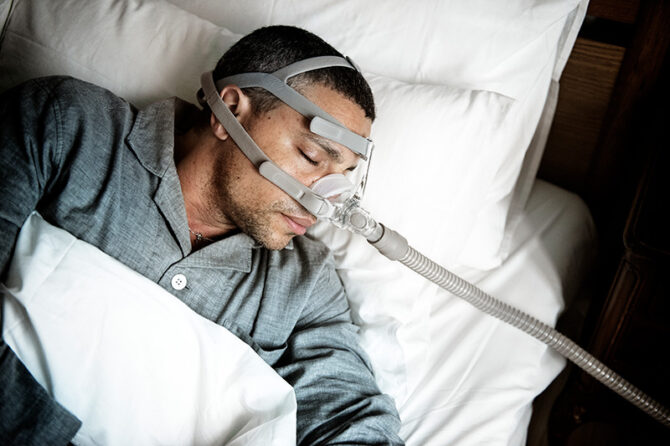
Summary: Obstructive Sleep Apnea (OSA) is a significant health issue, with potential severe complications. The US Preventive Services Task Force, with insights from Dr. Carol M. Mangione of the University of California, offers guidelines for OSA screening in adults. Data suggests that a significant portion of adults exhibit OSA symptoms, with associated risks like cardiovascular issues and increased mortality. The Task Force recommends screening asymptomatic adults over 18, using methods like the Apnea-Hypopnea Index. Due to rising obesity, OSA prevalence has grown. The guidelines stress the importance of structured OSA screening in primary care, emphasizing a proactive approach for improved public health.
Obstructive Sleep Apnea (OSA), a leading health challenge, leads to multiple complications when overlooked. Dr. Carol M. Mangione from the University of California, drawing from the directives of the US Preventive Services Task Force, offers a comprehensive overview of screening recommendations for OSA in adults.
Estimated data from 2007-2010 suggests that between ages 30 to 70, 14% of men and 5% of women show signs of mild OSA, with symptoms like daytime sleepiness. Another 13% of men and 6% of women possibly have moderate to severe OSA. This condition is linked with severe health risks like increased mortality, cardiovascular issues, cognitive impairments, and a heightened risk of motor vehicle accidents.
The USPSTF, after extensive assessment, asserts that current evidence is inadequate to gauge the advantages and disadvantages of OSA screening in the general adult populace. For insight into the USPSTF’s methodologies, one can refer to their Procedure Manual.
The focus of the recommendation is on asymptomatic adults aged 18 or older, including those with unidentified OSA symptoms like snoring or choking during sleep. It excludes individuals with clear OSA symptoms, those already referred for evaluation, and specific groups like children or pregnant individuals.
OSA is characterized by interrupted airflow during sleep due to the narrowing or obstruction of the pharyngeal airway. Its severity is gauged by the Apnea-Hypopnea Index (AHI). Factors such as age, gender, BMI, and specific anatomical abnormalities contribute to its risk. Diagnosis is conventionally done via polysomnography. While the primary remedy is a positive airway pressure device, weight loss is also advised for those overweight. Alternative treatments comprise Mandibular Advancement Devices and surgeries, though the latter isn’t a primary treatment.
With rising obesity rates, OSA prevalence has surged. Although its direct influence on mortality remains a topic of debate, OSA’s association with ailments like cardiovascular disease is undeniable. The usual side effects of treatment, like dryness or irritation, often recede after discontinuing the treatment. Most OSA diagnoses and treatments are currently managed by specialists, with primary care clinicians not routinely screening for OSA.
In light of these concerns, the USPSTF has revised its 2017 guidelines regarding OSA screening. Both the 2017 and current recommendations emphasize the scarcity of evidence regarding the benefits and drawbacks of OSA screening among asymptomatic adults.
For these guidelines, the USPSTF conducted a systematic review, evaluating the advantages and harms of OSA screening. Various prediction tools, including the Berlin Questionnaire and STOP-BANG questionnaire, were juxtaposed with polysomnography. Though direct evidence regarding the benefits of OSA screening on health outcomes was missing, some treatments did show improvements in intermediate outcomes.
Public responses to the draft recommendation necessitated a distinction between asymptomatic individuals and those with unidentified symptoms. Although certain feedback sought OSA screening for high-risk groups, the USPSTF reiterated the dearth of evidence supporting such actions. They stress that their evaluations don’t exclusively stem from randomized clinical trials.
The research community advocates for more studies on OSA screening, especially concerning the asymptomatic U.S. primary care group. Crucially, the establishment of accurate screening methods and comprehension of OSA’s natural trajectory is emphasized. Established groups like the US Department of Veterans Affairs don’t typically recommend OSA screening, barring evident symptoms or high-risk groups.
In conclusion, the guidelines by the US Preventive Services Task Force accentuate the structured approach needed in OSA screening, especially in primary healthcare. Through Dr. Mangione’s article, the pressing need for specific screening strategies becomes evident. With a dedicated approach to OSA detection, we can aim for better public health outcomes.
Reference / You can access the complete paper at the following link:
Leave a reply
















Leave a reply